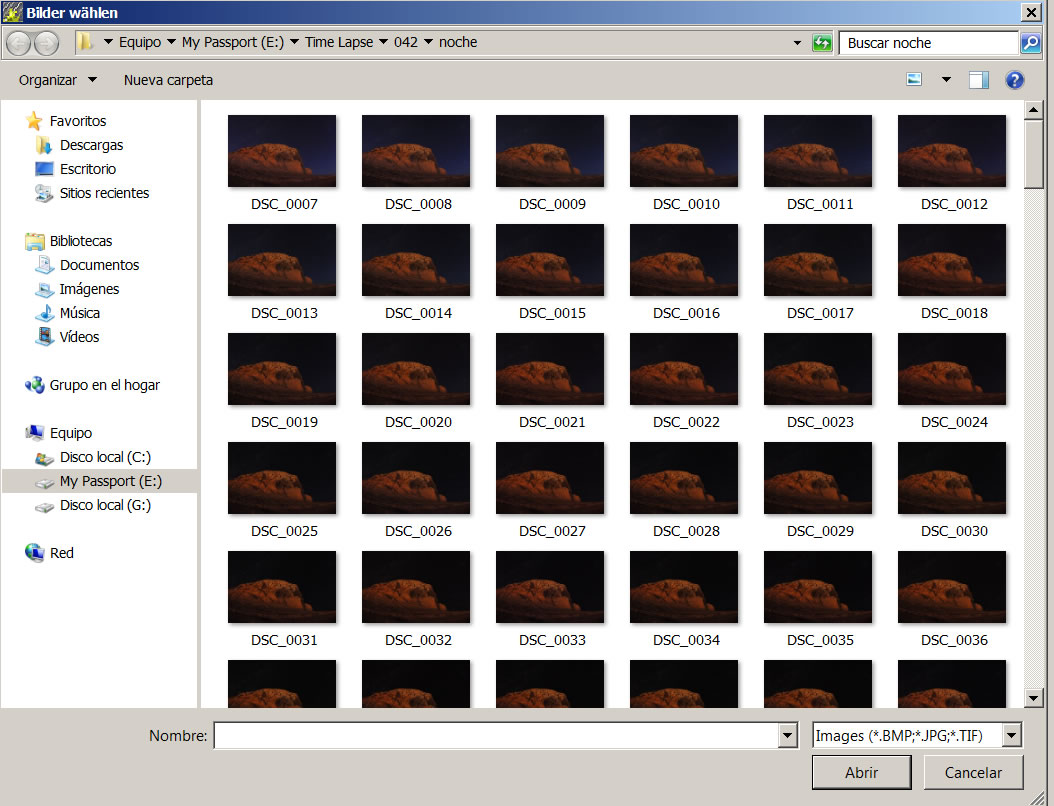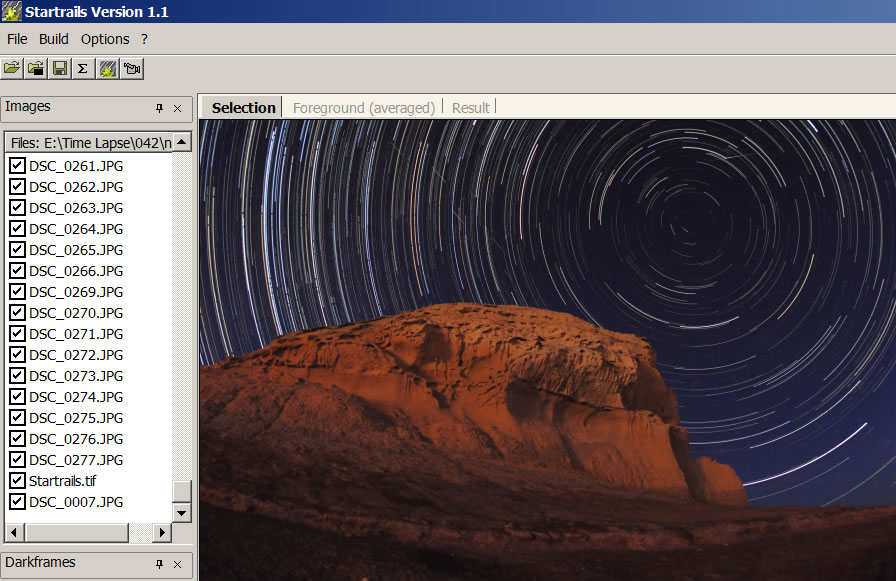Photgraphing the night sky to achieve Star-Trails
The program that is presented here allows for amazing images of star trails. In the digital imaging age, technology has adapted in a way that allows magical results.

Abducted by the South is a piece that I produced in 2009, and is the product of 250 individual images taken in sequence every 60 seconds. The pronounced rocky outcropping is Olazabal Point in Puerto Piramides, located at the end of the second access road to the sea and one of the two points that form the bay of Puerto Piramides.
With a Nikon D90, ISO setting of 5000, a 16mm lens set at f/6.3 and set firmly on a Manfroto tripod I was able to capture the movement of earth’s rotation represented by star trails in the southern night sky. This excellent program, through a special pasting process, allows for the super positioning of an enormous number of nocturnal images that the program organizes, based on sequence and star positioning, into a single image producing star trails. Startrails is a free software program that, once installed in your computer, takes just a few minutes to produce the final image. The real work is in knowing how to take the images you want to combine. The program will not work if there is no coherency in the images used.
 The basic concept for making this kind of image is to set your camera firmly of a tripod and attempt a relatively short exposure. Depending on the lens used and the ISO combination, an exposure of between 10-20 seconds shot in sequence with a remote control trigger. Each image should be separated by approximately 30-60 seconds and the program will work with from just 2-300 images. The more images used the longer the star trails produced.
The basic concept for making this kind of image is to set your camera firmly of a tripod and attempt a relatively short exposure. Depending on the lens used and the ISO combination, an exposure of between 10-20 seconds shot in sequence with a remote control trigger. Each image should be separated by approximately 30-60 seconds and the program will work with from just 2-300 images. The more images used the longer the star trails produced.
 Due to our planets rotation, the stars are not found in a fixed point in the sky, instead they produce the effect of movement. To capture this apparent movement and the light left behind by the stars the only things needed are a camera, tripod and the patience and time to take a sequence of images over a prolonged period of time. The stars observed in the night sky from any point of view will produce the sensation of moving around us. The stars that are positioned closer to the poles will give the sensation of being more static while those further from the poles and closer to the equator with more movement. Patience is key in capturing the necessary images. This program is fantastic only if you first take the time to capture a large number of images over an extended time frame without moving the camera.
Due to our planets rotation, the stars are not found in a fixed point in the sky, instead they produce the effect of movement. To capture this apparent movement and the light left behind by the stars the only things needed are a camera, tripod and the patience and time to take a sequence of images over a prolonged period of time. The stars observed in the night sky from any point of view will produce the sensation of moving around us. The stars that are positioned closer to the poles will give the sensation of being more static while those further from the poles and closer to the equator with more movement. Patience is key in capturing the necessary images. This program is fantastic only if you first take the time to capture a large number of images over an extended time frame without moving the camera.
 At the moment you decide to capture this sequence of images keep in mind that in the Southern Hemisphere, if your image is taken looking south the stars movement will appear rotational while if looking north the movement will appear linear and, If in the Northern Hemisphere, the opposite will occur. This last image was also taken at Olazabal Point but looking east rather than south. Here the appeared movement of the stars is seen clearly as linear with those on left side of the image (north) while those to the right (south) begin to curve. The brightness and color of each star varies with respect to its size, age and distance from our planet.
At the moment you decide to capture this sequence of images keep in mind that in the Southern Hemisphere, if your image is taken looking south the stars movement will appear rotational while if looking north the movement will appear linear and, If in the Northern Hemisphere, the opposite will occur. This last image was also taken at Olazabal Point but looking east rather than south. Here the appeared movement of the stars is seen clearly as linear with those on left side of the image (north) while those to the right (south) begin to curve. The brightness and color of each star varies with respect to its size, age and distance from our planet.




